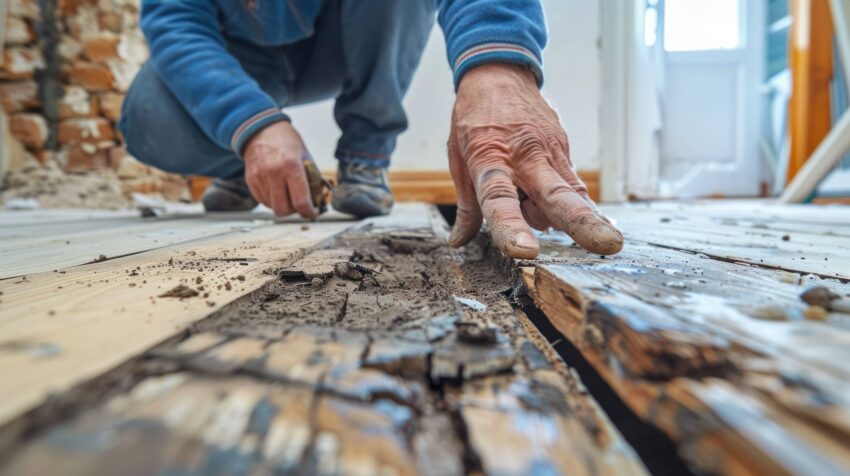Pest control is a critical aspect of maintaining a safe and compliant construction site.
Health and safety regulations require construction companies to address pest risks early in the project to avoid long-term damage, costly delays, and threats to workers’ well-being.
By proactively working with trusted providers of construction pest control services, particularly in cities like London, companies can ensure their projects run smoothly and remain in compliance with safety standards. Taking preventive steps early on can save both time and money while also ensuring the project stays on track.
Read this article to understand the specific regulations that guide pest control in construction, the impact pests can have on projects, and how a proactive approach can reduce costs and delays.
Understanding Health and Safety Regulations in Construction
In the construction industry, adhering to health and safety regulations isn’t just a legal obligation; it’s a practical approach to construction site management. Regulatory bodies like the Health and Safety Executive (HSE) in the UK emphasize the importance of managing risks associated with pests. These regulations aim to protect workers, ensure safe environments, and maintain the integrity of the building site. In particular, pests like rodents, birds, and insects can cause structural damage and pose health risks if left unchecked.
Many construction projects are subject to regular inspections, and failure to meet health and safety standards can result in costly fines or even work stoppages. By incorporating pest control as part of your health and safety strategy, you’re not only complying with regulations but also reducing the likelihood of project delays.
How Pests Affect Construction Projects
Pests can create major issues for construction projects, often leading to expensive repairs and interruptions. For instance, rodents may chew through electrical wiring, causing hazards or delays. Birds can damage structural materials or block gutters, leading to water damage. Insects such as termites can weaken wooden structures, posing long-term risks to building integrity.
Additionally, pests can pose significant health risks to workers, especially when they spread diseases or contaminate the work site. Ensuring that these problems are addressed early on can help construction companies avoid potential disruptions and meet project deadlines.
The Role of Early Pest Control in Reducing Costs
When construction projects begin, pest control might not be the first concern. However, addressing pest risks early can save considerable time and money in the long run. By working with leading providers of construction pest control in London or other large cities, companies can reduce the chances of an infestation taking hold during a critical point in the project.
Early intervention helps avoid expensive clean-up operations, damage repair, and project delays caused by infestations. For example, if a construction site faces rodent or bird infestations during the early stages of a project, it could lead to postponed work while dealing with the pests, resulting in extra labour and material costs. An effective pest control plan, implemented from the start, can prevent these issues from escalating.
Compliance with Pest Control Regulations
To remain compliant with health and safety regulations, construction companies must have a comprehensive pest control strategy. This plan should include regular inspections, timely interventions, and proper documentation of pest control measures. Regulatory authorities may require proof that appropriate steps are being taken to manage pest risks throughout the duration of the project.
Working with a professional pest control company ensures that your project meets regulatory requirements and minimizes the chance of penalties or delays. Many pest control companies offer tailored services that align with local regulations, helping construction companies stay on top of compliance without unnecessary hassle.
How Effective Pest Control Limits Project Delays
Infestations can cause significant project delays if not handled properly. Imagine a construction site plagued by termites or rodents at a time when work needs to move quickly. The damage caused by these pests could slow down construction, requiring additional resources to fix the problem. Worse, such infestations might violate health and safety regulations, halting work until the issues are resolved.
By integrating pest control from the beginning, construction companies can limit the risk of infestations during critical project phases. This proactive approach not only saves time but also prevents costly disruptions that can throw off timelines and increase labour costs. In competitive markets, minimizing delays can give companies an edge in delivering projects on time and within budget.
Cost Savings Through Preventive Pest Control
Incorporating pest control into a construction project’s budget may seem like an added expense, but it actually offers significant cost savings. Preventing pests from damaging materials, infrastructure, or delaying project timelines can save substantial amounts in repair costs, extended labor hours, and regulatory fines.
For example, regular pest inspections and treatments help avoid the need for emergency interventions, which are often more expensive and time-consuming. Additionally, by keeping construction sites compliant with health and safety regulations, companies can avoid fines and the negative financial impact of project delays. It is far more efficient and cost-effective to invest in preventive measures than to deal with a full-blown infestation.
Conclusion
Construction pest control is a vital aspect of complying with health and safety regulations while also reducing costs and avoiding delays. By working with experienced providers from the beginning of a project, construction companies can minimize the risk of pest infestations, ensure a safe work environment, and keep their projects on track. In the long run, investing in preventive pest control measures can lead to significant savings in time, money, and resources, ensuring both compliance and efficiency in construction projects.


